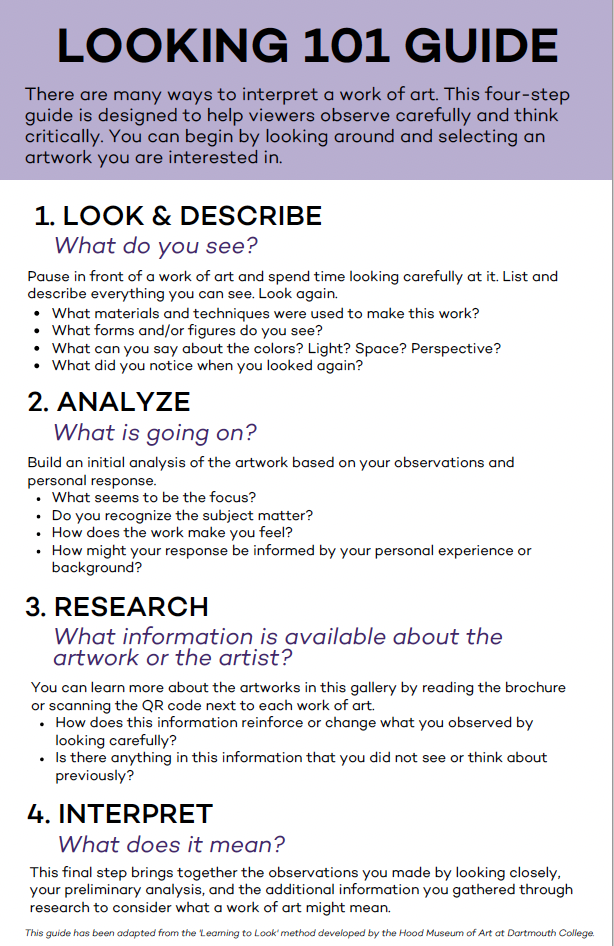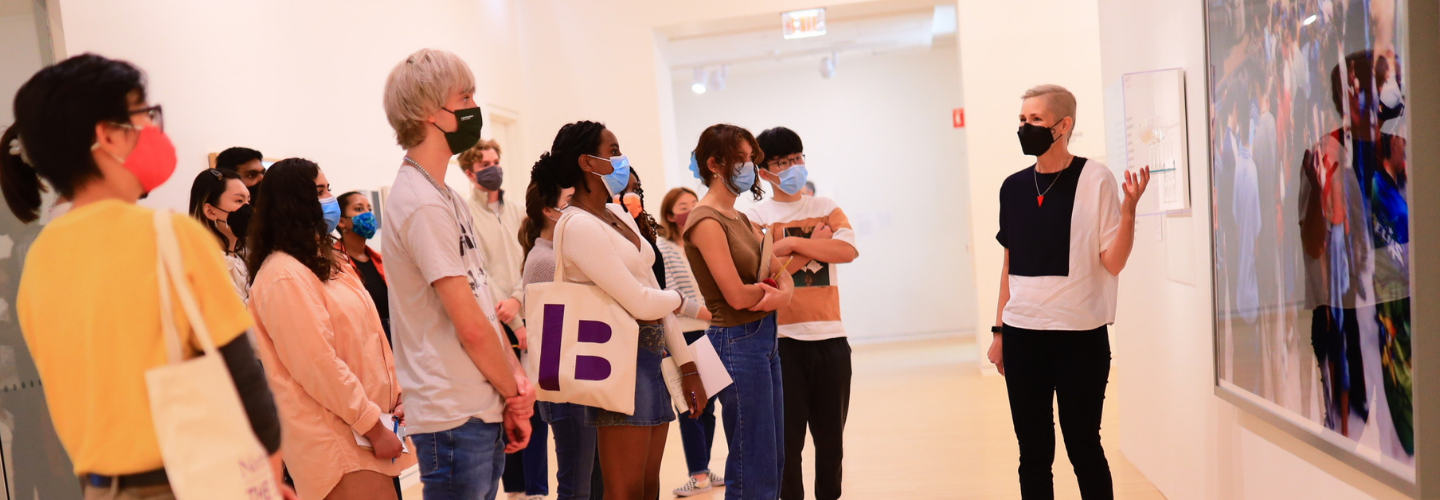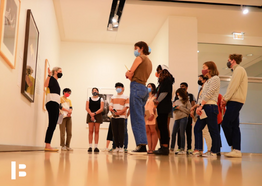Class is in session. Learn to look through art.
The average museum visitor spends less than 30 seconds looking at a work of art. It usually takes us far less than that to draw conclusions about what we see; the human brain seems to perform this work automatically and instantaneously. How do we slow down our looking habits to better understand the process of meaning-making? How do our individual backgrounds and lived experiences affect how and what we see?
We invite you to enter our teaching gallery and engage in a typical classroom activity: an exercise in close looking that can be used to analyze any work of art. We have intentionally excluded contextual and interpretive texts from the walls of this exhibition so you can begin your visit with direct observation of the artworks. Information about each artwork and discussion prompts are available in the brochure holder and on our website. You can do this exercise on your own or in conversation with other visitors.
This exhibition supports Northwestern University’s undergraduate curriculum with emphasis on first-year students. Works on view are from The Block’s collection and were selected with the help of faculty members across campus to relate to themes in their courses. Faculty members interested in learning more about the Block Teaching Gallery are encouraged to contact Essi Rönkkö at essi.ronkko@northwestern.edu.
The exhibition will be open to the general public when not scheduled for class use.
LOOKING 101 GUIDE

There are many ways to interpret a work of art. This four-step guide is designed to help viewers observe carefully and think critically. You can begin by looking around and selecting an artwork you are interested in.
Looking 101 Exhibition Labels - Accessible PDF
PDF optimized to accessibility standards for use within personal assistive technologies.


